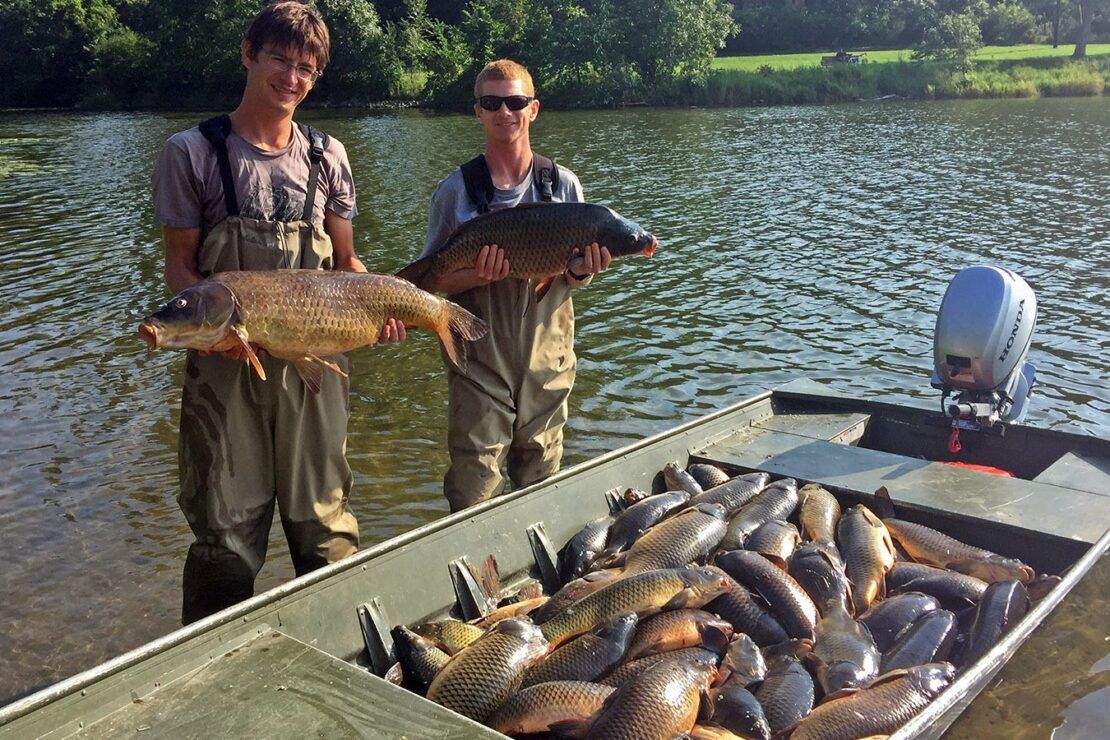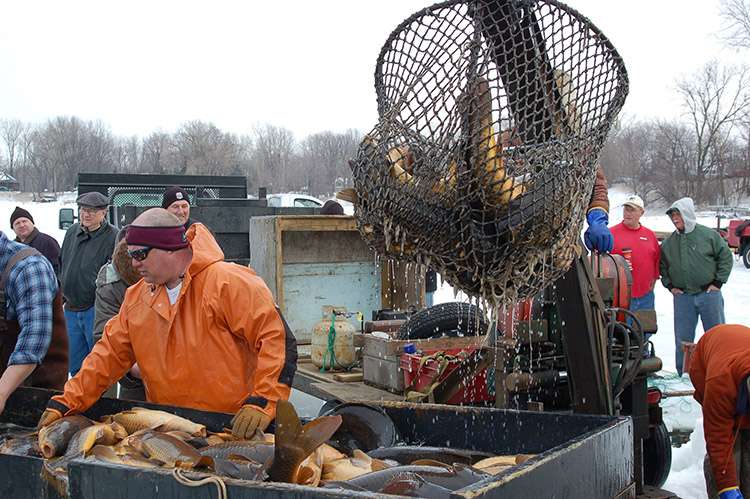


Lake Phalen Chain Carp Management
The Phalen Chain of Lakes: Groundbreaking carp research and effective management through a partnership with the University of Minnesota
In Lakes Kohlman, Gervais, and Keller the carp population has significantly declined by over 70% as a result of the management activities. In 2013, carp biomass dropped below the 100 pound/acre threshold where adverse water quality impacts can take place (see chart below). In addition, we have not detected any substantial quantities of young carp in the main lakes, suggesting that carp spawning in connected ponds and wetlands has been limited by the intensive management of these systems and the barrier installation. We are in the process of compiling a report that summarizes water quality trends in the Phalen Chain over the last ten years. In shallow systems, improvements in water quality may be linked to a reduction in carp densities. More information will be available in the coming years – please stay tuned.

